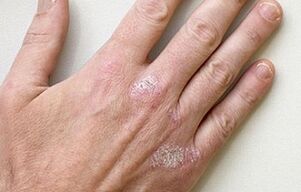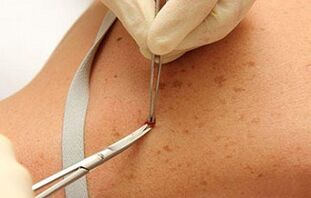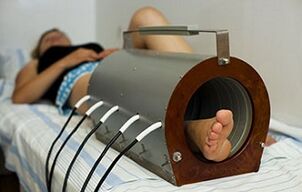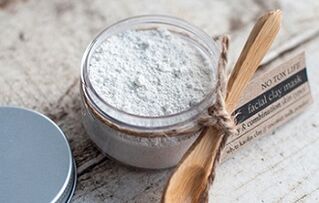Psoriasis is a chronic skin disease. It manifests itself in the form of skin rashes. The initial stage is characterized by symptoms similar to the clinical picture of other pathologies of the epidermis. To prevent the progression of the disease, to facilitate its course, it is necessary to differentiate the pathology. To do this, you need to know the symptoms, the manifestations of psoriasis in different stages.
Causes in adults and children
Why psoriasis occurs in children and adults, medical scientists have not yet figured out precisely. There is only speculation about the cause of the development of this disease. Thus, it is assumed that psoriasis can be inherited: in people whose parents suffered from such a skin disease, a psoriatic rash is often observed. Some doctors associate the development of the disease with immunological instability, metabolic disorders and the presence of a chronic infection. In most patients, doctors notice severe hyperlipidemia.
To verify susceptibility to such a disease, it is necessary to conduct a classical genome analysis. Those with ten chromosomal loci have a high chance of developing psoriasis. The main genome responsible for congenital predisposition is PSORS1.
Psoriasis can develop at any age: in children, in young men and women, in the elderly. In adults, according to medical scientists, the disease is caused by the following factors:
- low immunity;
- chronic fatigue;
- alcohol abuse;
- strong stress;
- poor hygiene;
- constant overeating;
- insect bite;
- infectious diseases (influenza, ARVI);
- vaccination;
- temperature difference;
- vitamin deficiency;
- tobacco smoke;
- long-term medications;
- burns;
- allergy;
- hormonal imbalance;
- climate change;
- incorrect power supply.
Children very often face psoriatic rashes:
- after a sore throat;
- if there is a chronic infection in the body;
- with low immunity.
Psoriasis Should Not Have Started:People with this diagnosis increase the risk of early atherosclerotic vascular lesions and heart disease. There is also a threat of arthritis.
Most often psoriasis occurs in people with poor heredity.
How psoriasis manifests itself

Psoriasis is characterized by the appearance of large plaques on the skin. The spots are initially insignificant and appear on those parts of the body where the skin is rougher (on the elbows, knees). Such formations fall apart. When scratching, sores appear that turn pale in the morning.
The disease is characterized by the following manifestations:
- Staining with stearin.These are small scaly papules fused into plaques.
- Terminal movie.Beneath the psoriatic plaques is a thin, bright pink skin. Your doctor can see after removing all the scales.
- Point bleeding(bloody dew syndrome). If the terminal film is damaged as a result of scraping the stratum corneum of the epidermis, drops of blood appear.
Such manifestations in the aggregate are called the psoriatic triad. They are detected during a sample of the inflamed skin area.
Psoriasis also has the following symptoms:
- the formation of new papules in case of skin damage and an increase in the lesion area;
- the elements of the rash have a dense structure;
- there is a red border around the plate;
- weakness;
- the presence of a three-millimeter whitish pseudo-atrophic border around the rash;
- purulent odor from the skin (when pustules are formed);
- the phenomenon of oily formation, in which a yellowish-brown spot appears under the nail plate;
- proliferative acanthosis, in which the skin thickens, the interpapillary processes lengthen;
- symptom of thimble (nail psoriasis);
- scabies.
Since psoriasis is a chronic pathology, its symptoms begin to disappear after a while, the wounds heal. But then the papules form again.
The first symptoms of the onset of the disease
The first stage of psoriasis always develops a rash.
At first it is almost invisible, with no characteristic scales. Several spots of rash appear on the limbs.

After a couple of weeks, the number of affected areas increases. The rash merges into large plaques, which are covered with silvery scales. Itching in the early stages of psoriasis is moderate. A person complains of chronic fatigue, weakness.
Such symptoms are also characteristic of allergic skin reactions, dermatitis and herpes zoster. Therefore, it is important to perform the differential diagnosis.
On examination, the doctor discovers the psoriatic triad. Based on the size of the rash, the doctor determines the etiology of psoriasis: drop-shaped, dotted or coin-shaped.
Signs of progressive disease
As the disease progresses, the number of papules increases, the rash spreads to healthy areas of the body. The slightest scratch, bump, or burn will trigger a nodular rash. The second stage takes a long time. On palpation, you can find dense boundaries between the inflamed areas of the epidermis. The plates have a border that stands out with a bright color and is covered with scales.
In the last stage of the disease, the symptoms begin to gradually disappear. Plaques lighten, edges fade. After a while, the papules disappear, in their place remains dry skin, hyperpigmented spots.
The temperature in psoriasis can rise only in the presence of an inflammatory process, suppuration of acne. So the affected areas can hurt.
What is the phenomenon of the stearin stain
Stearin spots are the main symptom that forms the psoriatic triad. It is a small area with papular elements of the rash, which are highly scaly. The more the doctor scrapes the affected skin, the more peeling appears. During the manipulation, the person does not feel pain. The phenomenon got its name because the detachable flakes of skin look like stearin spots.
Where it first appears: localization of rashes
Psoriatic rashes form on the elbows, feet and knees at first. Then the papules spread to areas of the body with thinner and more delicate skin: on the lower leg, lower back, wrist, abdomen, groin area, scalp. The rash can be located in other places. But these areas of the body are most often affected by psoriasis.
In the absence of adequate treatment, the disease spreads to the nails, mucous membranes, joints.
The localization of psoriatic rash in adults can be:
- Head. Rashes are observed on the scalp, ears, back of the head, in the area of the eyebrows, eyelids, eyes, nasolabial folds.
- Lower limbs.
- Elbows. Scaly plaques form that become rough over time.
- Upper limbs. A small rash similar to urticaria occurs.
In children, rashes usually appear on:
- legs;
- buttocks;
- skin folds;
- elbows;
- the scalp.
How scaly lichen on the head begins
Scaly lichen can spread throughout the body. It is usually acute. A rash forms from a heel to a pea. The papule is covered with silvery and white scales. The rashes increase in size over time, merge into a single focus with uneven edges. This plaque has a clear border. When the scalp is affected by psoriasis, a psoriatic crown is formed: red pustules with purulent contents appear behind the ears and along the forehead line.
How quickly the disease develops
How quickly psoriasis develops depends on its shape. So, the drop-shaped type of pathology is distinguished by the ability to suddenly appear and disappear. Severe plaque psoriasis is characterized by the gradual spread of pustules throughout the body. The rash then becomes covered with scales that flake off in a short time. The rashes join together, forming large plaques.
Diagnostic methods

If psoriasis is suspected, consult a dermatologist. The doctor makes a presumptive diagnosis based on the patient's complaints and examination. The doctor gives a referral to undergo laboratory instrumental research. Differential diagnostics are also performed.
As the disease progresses, it is recommended that blood be donated for analysis to identify an acute, autoimmune or rheumatic process. In severe situations, a biopsy is also performed, showing the accumulation of Rete bodies, thickening of the layer, infiltration of the skin by polyblasts, T lymphocytes, dendritic cells, increased angiogenesis under psoriatic plaques.
For the differential diagnosis, run:
- allergy test;
- serum biochemical test;
- analysis of stool for dysbiosis;
- histological examination of the biopsy.
No special tests are required to diagnose psoriasis in children. Pathology is detected on the basis of examining the elements of the rash.
How to treat psoriasis
Since psoriasis is considered a chronic condition, it cannot be completely cured. The goal of therapy is to achieve stable remission and eliminate complications. To do this, use drugs, physiotherapy, folk methods. In severe cases, the patient is hospitalized. At the initial stage, therapy can be done at home.
Clinical therapy
To treat psoriatic lesions, doctors prescribe antihistamines to relieve swelling, itching, and redness.

Enzymatic agents are also used. They stimulate the body to produce the necessary enzymes. Damage to the skin of the body causes discomfort, a sense of oppression.
Awareness that illness cannot be cured causes psychological problems. Therefore, doctors prescribe sedative drugs to help restore the emotional state.
Hepatoprotectors are used to improve liver function. Inflammation and itching can be relieved by non-steroidal anti-inflammatory drugs. To strengthen the body, immunomodulators are prescribed.
Physiotherapy techniques are also used. They help remove pigmentation and accelerate healing. Doctors recommend:
- selective phytotherapy;
- action of the laser on the skin;
- ultrasound treatment;
- magnetotherapy.
In a hospital, the patient is under the constant supervision of doctors. Thus, it is easy to monitor the effectiveness of the prescribed treatment regimen and make timely changes to the applied therapy.
Home care
After discharge from the hospital, the treatment continues. To maintain normal health, to achieve stable remission, doctors prescribe a number of drugs in one course. Vitamin complexes, ointments, folk remedies are used.
The patient is recommended to treat the skin areas affected by psoriasis daily with hormonal and non-hormonal ointments.
To improve the condition of the epidermis, dermatologists prescribe vitamins. Vitamins A, E, D and C are particularly useful in the fight against psoriasis, strengthen the body's defenses, help restore and purify the skin.

Traditional healers suggest using activated charcoal. One of the main reasons for the development of psoriasis is metabolic disorders, intoxication. Activated carbon acts as an absorbent, so it cleanses the body well of harmful substances. It should be consumed for a month, twice a day, at a dose of 1 tablet per kilogram of body weight.
White clay helps restore the skin. Relieves inflammation, dries, removes itching. Baths with the addition of sea salt are also useful.
When treating psoriasis at home, it is recommended to adhere to a number of rules:
- Take the medications prescribed by your doctor in the indicated dose.
- Treat the skin with ointments and creams.
- Carefully remove crusts after softening them.
- Get air and sunbathe.
- Avoid stressful situations.
- Observe the daily routine, the diet.
- Get enough rest.
- Take breaks while taking medication.
By adhering to these recommendations, a person can avoid a relapse of the disease.
Therefore, psoriasis is a severe chronic disease. The reasons for its development have not been precisely established, only the provoking factors are known. The disease has characteristic symptoms, but at the first stage it is similar to other skin pathologies. To identify and start treating the disease in time, it is necessary to contact a dermatologist when a suspicious rash appears.
























